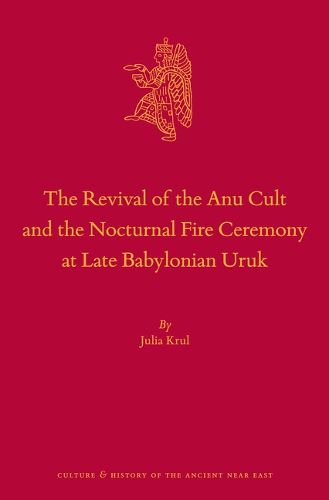Readings Newsletter
Become a Readings Member to make your shopping experience even easier.
Sign in or sign up for free!
You’re not far away from qualifying for FREE standard shipping within Australia
You’ve qualified for FREE standard shipping within Australia
The cart is loading…






In The Revival of the Anu Cult and the Nocturnal Fire Ceremony at Late Babylonian Uruk, Julia Krul offers a comprehensive study of the rise of the sky god Anu as patron deity of Uruk in the Late Babylonian period (ca. 480-100 B.C.). She reconstructs the historical development of the Anu cult, its underlying theology, and its daily rites of worship, with a particular focus on the yearly nocturnal fire ceremony at the Anu temple, the Bit Res.
Providing the first in-depth analysis of the ceremony, Julia Krul convincingly identifies it as a seasonal renewal festival with an important exorcistic component, but also as a reinforcement of local hierarchical relationships and the elite status of the Anu priesthood.
With this study, Krul adds significantly to the research on Babylonian temple rituals in general, providing a useful methodology and survey of secondary sources….This book offers an excellent in-depth analysis of the nocturnal fire ceremony as it could have been celebrated at Hellenistic Uruk. It forms a good starting-point for comparison with and further study of other Late Babylonian rituals from both Uruk and Babylon. - Celine Debourse, Vienna, in: Wiener Zeitschrift fur die Kunde des Morgenlandes 109 (2019)
The book is essentially a commentary on a late cuneiform text from 3rd-century BCE Uruk describing a nocturnal sacrificial ritual held annually on the winter solstice (16 Tevet). The text itself is well known, having first been published by F. Thureau-Dangin in his classic work Rituels accadiens (1921), but this book is the most comprehensive far-reaching commentary on this important text, with valuable extraneous information […]. There is much valuable data in this book regarding late Babylonian ritual practice, couched in an informative narrative.
-Markham J. Geller, Journal for the Study of the Old Testament 43.5 (2019)
$9.00 standard shipping within Australia
FREE standard shipping within Australia for orders over $100.00
Express & International shipping calculated at checkout
In The Revival of the Anu Cult and the Nocturnal Fire Ceremony at Late Babylonian Uruk, Julia Krul offers a comprehensive study of the rise of the sky god Anu as patron deity of Uruk in the Late Babylonian period (ca. 480-100 B.C.). She reconstructs the historical development of the Anu cult, its underlying theology, and its daily rites of worship, with a particular focus on the yearly nocturnal fire ceremony at the Anu temple, the Bit Res.
Providing the first in-depth analysis of the ceremony, Julia Krul convincingly identifies it as a seasonal renewal festival with an important exorcistic component, but also as a reinforcement of local hierarchical relationships and the elite status of the Anu priesthood.
With this study, Krul adds significantly to the research on Babylonian temple rituals in general, providing a useful methodology and survey of secondary sources….This book offers an excellent in-depth analysis of the nocturnal fire ceremony as it could have been celebrated at Hellenistic Uruk. It forms a good starting-point for comparison with and further study of other Late Babylonian rituals from both Uruk and Babylon. - Celine Debourse, Vienna, in: Wiener Zeitschrift fur die Kunde des Morgenlandes 109 (2019)
The book is essentially a commentary on a late cuneiform text from 3rd-century BCE Uruk describing a nocturnal sacrificial ritual held annually on the winter solstice (16 Tevet). The text itself is well known, having first been published by F. Thureau-Dangin in his classic work Rituels accadiens (1921), but this book is the most comprehensive far-reaching commentary on this important text, with valuable extraneous information […]. There is much valuable data in this book regarding late Babylonian ritual practice, couched in an informative narrative.
-Markham J. Geller, Journal for the Study of the Old Testament 43.5 (2019)